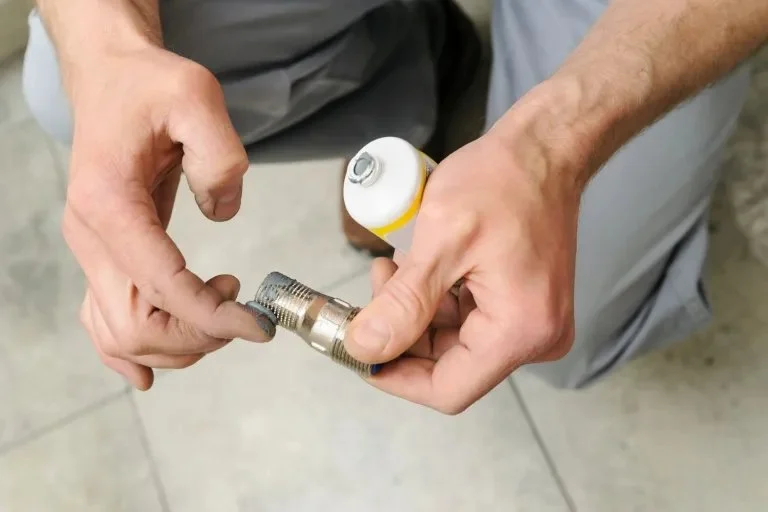
How to Choose the Right Sealant for Pipe Joints
- 1. Understanding Pipe Joint Sealants
- 2. Factors to Consider When Choosing a Sealant
- 3. Top Types of Sealants for Pipe Joints
- 4. How to Apply Sealants Effectively
- 5. Explore Sealants at Plumbers Supply Hub
Choosing the right sealant for pipe joints is crucial for ensuring long-lasting, leak-free plumbing. Whether you're working on a new installation or repairing an existing system, selecting the appropriate sealant helps maintain the integrity of your pipes. In this guide, we will explore the different types of pipe joint sealants, factors to consider when choosing one, and how to apply it properly.

Roto-Rooter Plumbing & Water Cleanup
Ellwood CityBeaver CountyPennsylvania
1661 PA-65, Ellwood City, PA 16117, USA
1. Understanding Pipe Joint Sealants
Pipe joint sealants are materials used to fill the gaps between two pipe connections to prevent leaks. They are especially important in areas where pipes are under pressure or subjected to movement. These sealants provide an effective barrier against water, air, and gas leakage, ensuring the longevity and safety of your plumbing system. There are several types of sealants available, each suited for different applications.
2. Factors to Consider When Choosing a Sealant
When selecting a sealant for pipe joints, it's important to consider several factors to ensure the best possible performance and durability. Here are the main considerations:
- Material Compatibility: Different sealants are designed for specific materials, such as PVC, copper, or galvanized steel. Make sure the sealant you choose is compatible with the material of your pipes.
- Temperature Resistance: Some sealants are better suited for high-temperature environments, while others work best in colder conditions. Make sure the sealant can withstand the temperature range your pipes will be exposed to.
- Water Resistance: If your pipes are exposed to frequent water or humidity, it's essential to choose a water-resistant sealant that will maintain its integrity over time.
- Application Ease: Consider whether the sealant is easy to apply and whether you need additional tools or equipment for application.
- Curing Time: Sealants may require varying amounts of time to cure. If you need a quick fix, opt for a fast-curing sealant. For long-term repairs, a more durable, slower-curing option might be best.
3. Top Types of Sealants for Pipe Joints
There are several types of sealants available for pipe joints, each offering unique benefits. Here are the most commonly used types:
- Thread Sealant Tape (PTFE Tape): Often used for threaded pipe connections, PTFE tape is a popular choice due to its ease of use and ability to prevent leaks in low-pressure systems.
- Silicone Sealants: Silicone sealants are flexible, water-resistant, and provide a strong seal in both hot and cold environments. They are commonly used in areas where pipes experience vibration or movement.
- Pipe Joint Compound: Pipe joint compound is a thick paste that is often used in industrial settings to seal threaded pipe joints. It offers a strong, durable seal for metal pipes under pressure.
- Rubber Gaskets: Used in large piping systems, rubber gaskets provide a flexible and reliable seal, particularly in applications involving high temperatures or pressure.
- Acrylic Sealants: Acrylic-based sealants are ideal for sealing PVC and metal pipes in residential settings. They are easy to apply, offer excellent adhesion, and are available in a variety of formulations.
4. How to Apply Sealants Effectively
Applying pipe joint sealants effectively is key to achieving a long-lasting, leak-free seal. Here are some general steps to follow:
- Clean the Surface: Before applying any sealant, clean the pipe and joint thoroughly to remove any debris, oil, or rust. This ensures better adhesion of the sealant.
- Apply the Sealant: For tape, wrap it around the threads of the pipe. For paste sealants, apply an even layer to the threads or surface of the joint.
- Assemble the Pipe: Connect the pipe joints tightly to ensure a proper seal. If using PTFE tape, avoid overtightening the pipe to prevent tape damage.
- Allow the Sealant to Cure: Follow the manufacturer's instructions regarding curing time. Some sealants require up to 24 hours to fully cure.
5. Explore Sealants at Plumbers Supply Hub
For a wide selection of high-quality pipe joint sealants, visit Plumbers Supply Hub. Whether you're looking for PTFE tape, silicone sealants, or pipe joint compound, we offer the best products for all your plumbing needs. Shop with us today for expert advice and premium sealant products to keep your pipes leak-free.
In conclusion, selecting the right sealant for your pipe joints is essential for maintaining a strong and durable plumbing system. By understanding the types of sealants available, considering key factors like material compatibility and temperature resistance, and applying the sealant correctly, you can ensure a secure, leak-free connection that lasts for years to come.


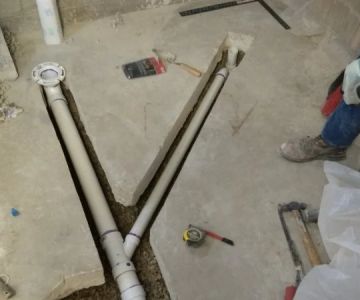





 Oakland Plumbing LLC5.0 (17 reviews)
Oakland Plumbing LLC5.0 (17 reviews) Midwest Plumbing & Service4.0 (7 reviews)
Midwest Plumbing & Service4.0 (7 reviews) Moberly Plumbing4.0 (117 reviews)
Moberly Plumbing4.0 (117 reviews)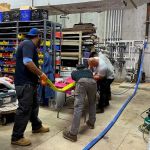 American Trenchless Technologies4.0 (8 reviews)
American Trenchless Technologies4.0 (8 reviews) Tony's Plumbing3.0 (12 reviews)
Tony's Plumbing3.0 (12 reviews) Socal Plumbing Co5.0 (5 reviews)
Socal Plumbing Co5.0 (5 reviews) How to Repair a Hairball Clog Without Harsh Chemicals
How to Repair a Hairball Clog Without Harsh Chemicals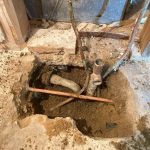 How to Repair a Junction That Is Leaking Under Slab: A Comprehensive Guide
How to Repair a Junction That Is Leaking Under Slab: A Comprehensive Guide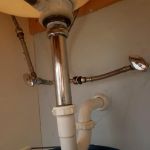 How to Replace a Sink Overflow Tube: A Complete Step-by-Step Guide
How to Replace a Sink Overflow Tube: A Complete Step-by-Step Guide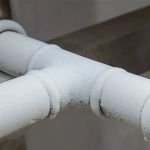 What Causes Frozen Pipes and How You Can Prevent It - Expert Tips
What Causes Frozen Pipes and How You Can Prevent It - Expert Tips How to Replace a Shower Niche Drain: Step-by-Step Guide for Homeowners
How to Replace a Shower Niche Drain: Step-by-Step Guide for Homeowners How to Replace an In-Wall Shower Drain: Step-by-Step Guide
How to Replace an In-Wall Shower Drain: Step-by-Step Guide